
Browse an alphabetical list of photographs. These historical images portray people, places, and events before, during, and after World War II and the Holocaust.
<< Previous | Displaying results 376-400 of 2641 for "Photo" | Next >>
This photograph shows Dina Sarna in front of a sign saying "Jewish DP Camp" in the Bad Reichenhall camp for Jewish displaced persons. Bad Reichenhall, Germany, 1947.
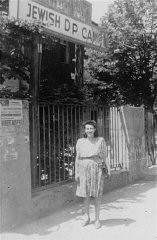
Hitler Youth leader Baldur von Schirach speaking at the opening of the Reich Academy for Youth Leadership. Braunschweig, Germany, June 4, 1938.
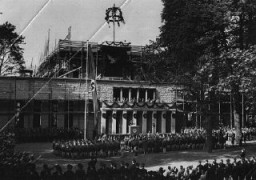
View of a barbed-wire fence separating part of the ghetto in Krakow from the rest of the city. Krakow, Poland, date uncertain. During the Holocaust, the creation of ghettos was a key step in the Nazi process of brutally separating, persecuting, and ultimately destroying Europe's Jews. Ghettos were often enclosed districts that isolated Jews from the non-Jewish population and from other Jewish communities.
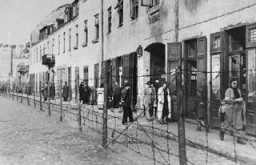
A view of the double row of barbed-wire fences that surrounded the Ohrdruf camp, a subcamp in the Buchenwald camp system. Ohrdruf, Germany, April 1945.
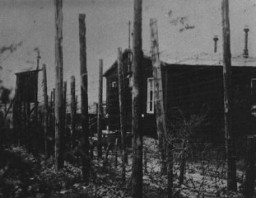
A section of barbed-wire fencing surrounding the Plaszow camp. Plaszow, Poland, 1943-44.
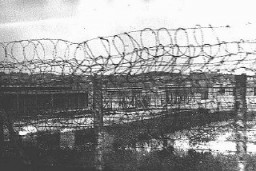
Barracks for prisoners at the Flossenbürg concentration camp, seen here after liberation of the camp by US forces. Flossenbürg, Germany, May 5, 1945.
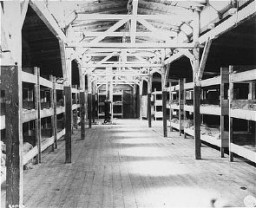
Interior view of prisoners' barracks at the Ohrdruf subcamp of the Buchenwald concentration camp. This photograph was taken after liberation. Ohrdruf, Germany, April 13, 1945.

View of barracks in the women's camp in the Auschwitz-Birkenau killing center in German-occupied Poland, 1944.
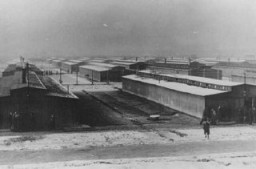
Barracks in the Auschwitz-Birkenau camp. This photograph was taken after the liberation of the camp. Auschwitz-Birkenau, Poland, after January 29, 1945.
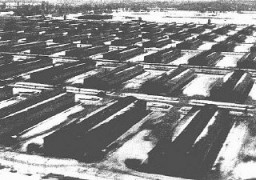
View of barracks after the liberation of Kaufering, a network of subsidiary camps of the Dachau concentration camp. Landsberg-Kaufering, Germany, April 29, 1945.
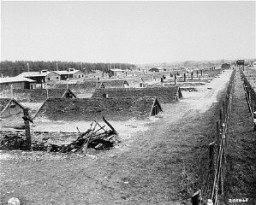
A view of barracks in the Kaufering network of subsidiary camps of the Dachau concentration camp. Landsberg-Kaufering, Germany, after April 27, 1945.

A view of barracks in the Buchenwald concentration camp. This photograph was taken after the liberation of the camp. Buchenwald, Germany, after April 11, 1945. Buchenwald, along with its subcamps, was one of the largest concentration camps established within the old German borders of 1937.
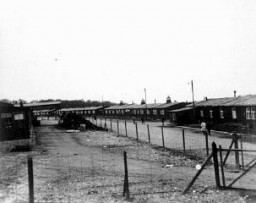
The interior of a barracks at the Westerbork transit camp, after liberation. Westerbork, the Netherlands, after April 12, 1945.
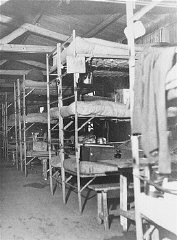
Troops supporting Hitler arrive in Munich during the Beer Hall Putsch on November 9, 1923.
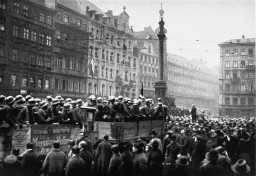
A runner begins the torch relay (the first "Olympia Fackel-Staffel-Lauf") in Oympia, Greece., ca. July 1936. The 1936 Games were the first to employ the torch run. Each of 3,422 torch bearers ran one kilometer (0.6 miles) along the route of the torch relay from the site of the ancient Olympics in Olympia, Greece, to Berlin. Former German Olympian Carl Diem modeled the relay after one that had been run in Athens in 80 B.C. It perfectly suited Nazi propagandists, who used torchlit parades and rallies to…
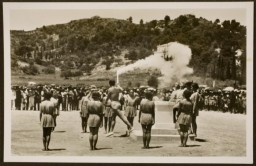
Cover to György Beifeld's album, featuring a road sign with the Hungarian Labor Service company number 109/13 posted in a muddy wasteland. The Jewish labor servicemen were forced to construct roads on these muddy fields to accommodate the advance of the Hungarian 2nd Army toward the Don River.
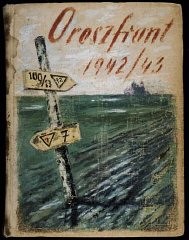
In a take-off of travel posters advertising peaceful vacation spots, Beifeld draws a picture of a Hungarian military tent pitched next to a tree on which a bird is cheerfully chirping. Next to the tent the artist writes "Peaceful Surroundings" but above, a Soviet bomber releases a bomb aimed at the tent. [Photograph #58022]
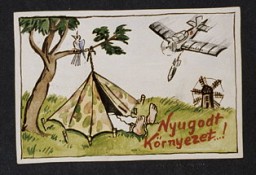
Belongings of a Jewish family murdered by an SS mobile killing squad at Babyn Yar. On September 29-30, 1941, the SS killed more than 33,000 Jews from Kyiv (Kiev). A German Propaganda Company photographer took this image within days of the massacre. Kyiv, German-occupied Soviet Union, after September 30, 1941.

Clothing belonging to Jewish victims murdered by the SS at the nearby Babyn Yar killing site. Prior to the mass shootings, the SS ordered Jews to undress and leave their belongings. They then marched or drove the victims to the killing site. A German photographer took this image within days of the mass shootings. Kyiv (Kiev), German-occupied Soviet Union, after September 30, 1941.
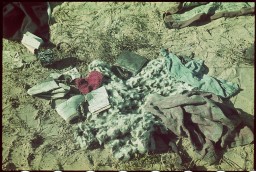
The SS ordered Jews to undress prior to the mass shootings at the nearby Babyn Yar killing site. In two days, September 29-30, 1941, they shot more than 33,000 Jews from Kyiv (Kiev). This photograph, taken by a member of a German Propaganda Company, shows just some of the belongings of these victims. Kyiv, German-occupied Soviet Union, After September 30, 1941.
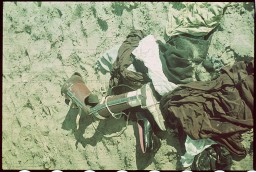
Belongings of Jews who were deported from Vienna. Austria, 1941–42.
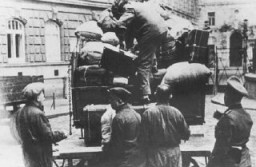
Ben Kamm in uniform after the war. Ben escaped from the Warsaw ghetto and joined partisan units to resist the Nazis. At the end of the war he discovered he was the sole survivor of his entire family.
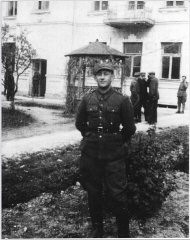
Benito Mussolini and Adolf Hitler stand together on an reviewing stand during a official visit to occupied Yugoslavia, 1941–43.
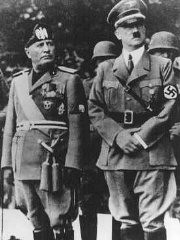
Benjamin Meed (right) and Harvey Meyerhoff stand next to the cornerstone for the United States Holocaust Memorial Museum. In October 1988, President Ronald Reagan spoke at a special ceremony held when the cornerstone of the Museum was laid, with construction beginning in July 1989 and ending in April 1993. Washington, DC, 1988.
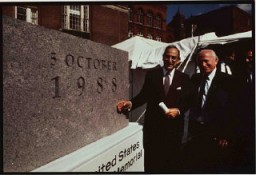
While living in hiding on the Aryan side of Warsaw, Benjamin Miedzyrzecki (Ben Meed) returns to the site of the Warsaw ghetto, where he poses among the ruins. Warsaw, Poland, 1944.

We would like to thank Crown Family Philanthropies, Abe and Ida Cooper Foundation, the Claims Conference, EVZ, and BMF for supporting the ongoing work to create content and resources for the Holocaust Encyclopedia. View the list of donor acknowledgement.